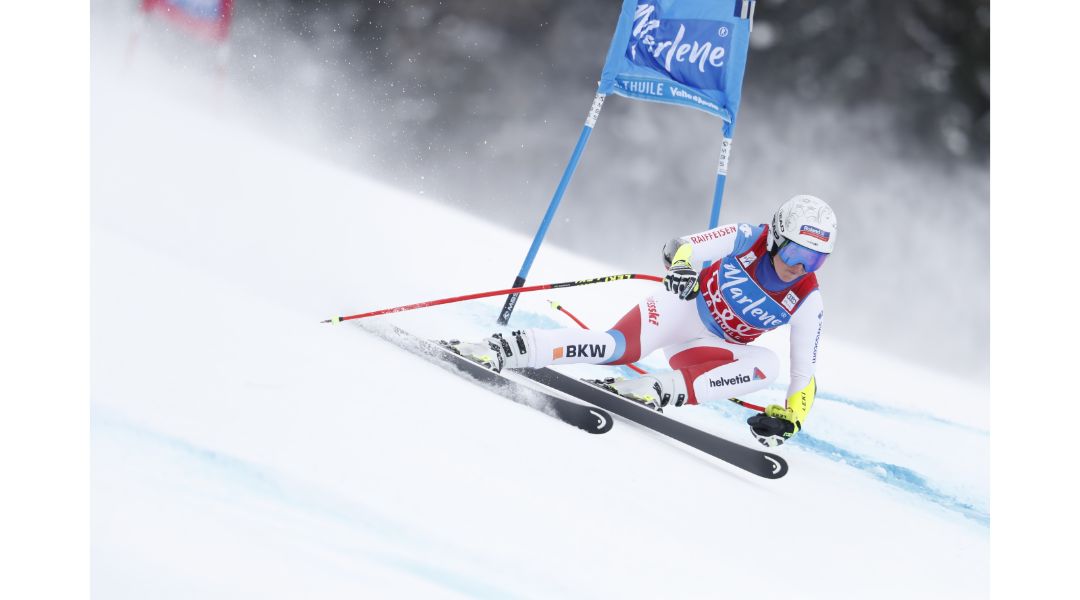Overview
Every brand, large and small, foreign or domestic, has to make a choice about how they want to build a ski. Once they settle on a construction and the equipment to execute it is on premises, they tend to stay with it for the long haul. Head’s wheelhouse construction could not be more fundamental or more sound: while other brands have obsessed with making a cheaper, higher margin ski, Head has stayed with what it knows will never fail them: a stout wood core, two sheets of titanal and carefully calibrated, pre-impregnated fiberglass to wrap it all up. To those who might quibble some of Head’s skis are over-built, we would counter, wouldn’t you rather own a brand that errs on the side of excellence?
As an Austrian brand, Head has always placed a premium on race results, and its investments in this area are paying impressive dividends. In a sport where wins can be measured in the thousandth of a second, who comes out on top may appear serendipitous; when athlete after athlete is holding up a crystal globe recognizing a season of superiority, something other than serendipity is afoot.
While Head’s victories on the World Cup can’t be discounted, translating gold medals into dollars hasn’t been easy. The American market is not race-driven, to put it mildly. Americans want to go where they wanna go, do what they wanna, wanna do; we’re all about freeride, dude! Head, to its great credit, is first and foremost about technique. Head was the first major brand to treat the Carving trend seriously and make it part of its identity. Hooking into the top of a turn is part of the brand’s essential make-up. Even its recently retired off-trail Monster series has a baseline and tail design more like a carving ski than the typical smear sticks found in the Big Mountain genre. It shouldn’t surprise that Head’s off-trail skis once languished in anonymity in the U.S.
Until three years ago, when Head unveiled the Kore series. Seven years ago, Head changed its entire women’s collection, centering the new series on its use of Graphene, carbon in a matrix one-atom thick. Since then, Graphene has spread through every product category, finally reaching the off-trail Kore collection. Capitalizing on Graphene’s obscene strength-to-weight ratio, Head matched it with Koroyd honeycomb, a triaxial weave of carbon and ultralight Karuba wood to build the Kore’s core, topping it with fleece to minimize mass.
It’s no exaggeration to say the Kore series has catapulted Head into hitherto unknown sales territory for its All-Mountain, Big Mountain and Powder models. Head attempted another coup two years ago with a new lightweight series of system carving skis called V-Series (for its high taper ratio between tip width and tail width). The V-Series uses Graphene in a construction it calls LYT Tech, applying the same materials used in Kore models to make exceptionally lightweight carving skis. Paired commercially with the new Nexo-LYT boot – also built with Graphene and made to be as light as possible – Head is pioneering a new generation of skis that don’t require as much mass to be stable at speed.
Head is betting heavily that the LIB trend isn’t a fad but a here-to-stay reality. The V-Series of (mostly) Frontside skis, featuring LYT Tech, replaced the Instinct system skis that were built along the same Old School lines as the Monsters. The Monsters have now followed the Instincts into retirement, yielding their spot in Head’s line-up to the narrowest Kore, the new 87.
The contrast between Head’s two carving collections, Supershape and. V-Shape, couldn’t be starker. When Head added Graphene to the Supershapes a few seasons ago, it used the weight savings to add more metal to the mix. The V-Shapes eliminate metal everywhere but in the edges. The Supershapes aim exclusively at skiers with elite skills; the V-Shapes hit every price point from coach to first class. The V-Shapes also have companion LYT Tech boots, a high degree of product integration often seen in backcountry ensembles but not much elsewhere in the current market.
Another major differentiator of the V-Series is part of its name: compared to Supershapes, the V-Series tail is considerably narrower, allowing the less skilled skier to scrub the end of the turn with impunity. The gulf between the two carving families grew wider this year, as the 2021 Supershapes have raised their collective game with a new damping system that gives them a fifth gear.
That Head should continue to offer two families of carving skis with contrasting personalities speaks to both the popularity of on-trail skiing in Europe and the brand’s long-standing commitment to carving as the cornerstone of the recreational market.

